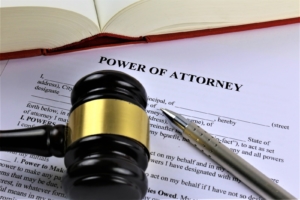What to Include On a Legal Power of Attorney Form
 Do you work at a law firm and wish to complete your tasks faster? Are you a HotDocs user who wants to improve the way you automate your documents? Does it take you a long time drafting a power of attorney form?
Do you work at a law firm and wish to complete your tasks faster? Are you a HotDocs user who wants to improve the way you automate your documents? Does it take you a long time drafting a power of attorney form?
Crafting a power of attorney document can sometimes be tricky. Since it varies from client to client, you need to zoom into every detail without compromising the basics.
With tons of paperwork already on your desk, you need to learn how to do things efficiently. Certain days require you to work overtime. But working overtime too often is harmful to your health and well-being.
Read on below to learn more on which parts of a power of attorney document you should never miss.
Power of Attorney Form: What’s It All About?
Let us first have a quick refresher on what a power of attorney is all about. It is a legal document that allows a person (principal) to designate another person or organization (agent) to manage their affairs if they become incapacitated.
Let’s take a look at some of the basic types of power of attorney forms.
1. General Power of Attorney
This type covers a broad range of matters. It can be the buying and selling of real estate or purchasing life insurance. It is also used to settle securities like municipal bonds.
2. Health Care Power of Attorney
The health care type, on the other hand, revolves on the type of medical care the principal should receive in the event of incapacitation. This also becomes valid in case they go into a coma.
3. Special Power of Attorney
This type allows the principal to choose the specific powers they will assign to the agent in case of incapacitation.
4. Durable Power of Attorney
This means that the person that the principal is assigning the power of attorney to will have the powers only in the event that they become mentally incapacitated. It should be clearly stated in the form that the agent will receive the powers if and only when the principal becomes mentally incompetent to handle his or her affairs.
5. Springing Power of Attorney
This means that that document will only take into effect on the date that the principal specified.
People who are planning to go out of the country for a particular time period use this. They execute this document so that the agent can take over their business decisions while they are away.
These different forms play a crucial role in estate planning. Surprisingly, half of Americans don’t have these important estate documents. Apart from a power of attorney document, one of every two Americans does not have a living will, a last will and testament, and trusts.
The Components of a Legal Power of Attorney Form
Now let’s go through the essential components of a legal power of attorney form:
The Date
First, the power of attorney document must have a date of execution. Without this, the document will be futile. If you are issuing a springing document, specify the exact date when you want to grant power to the agent.
The Key Parties
The document should clearly indicate the two parties. This pertains to the principal and the agent, who is the person the principal is giving powers. Both names must be complete and without error.
The Specific Acts
The form should also contain the specific legal acts the principal wants the agent to perform. Make sure the details are clear and specific to avoid any confusion.
Signatures Matter
The document should come with signatures. The signature of the principal can also be that of another adult who is under his direction. He or she must sign the document in the principal’s presence.
Have Witnesses
The signing of the power of attorney must have the presence of two witnesses. It is also advisable that a notary public acknowledge the document.
Keep in mind that the requirements are likely the same for most states. Some states, however, may require you to fill out special forms. It is best to download an online power of attorney legal form.
There are also legal document automation options available online. Be sure to pick a trusted one.
Important Reminders
On top of the essential requirements of a power of attorney document, there are other important things that you should keep in mind.
Not All Powers Are Executable
First, there are certain powers that state laws don’t allow the principal or the agent to execute. One example is that the agent cannot execute a will in behalf of the principal.
Prepare a Revocation
In the event that the principal changes their mind, they need to prepare a revocation of power of attorney. They should prepare this with you around.
Hire an Attorney
For private, non-lawyer individuals, it is wise to have a trusted attorney by your side when preparing documents.
Your lawyer should look into the details of the document to ensure that you do not miss anything. Sometimes, it is the small details that cause the biggest headaches.
Go for Recognition
If the power of attorney involves banks and other financial institutions, make sure the latter recognizes it. Before the principal signs the document, take it to the bank to ensure that it meets all of the latter’s requirements.
Store in a Secure Place
Lastly, you need to keep your documents in a secure place. Invest in a sturdy safe or deposit box. Make sure you can access it easily when the time comes.
Let’s Prepare Your Legal Power of Attorney Form Today!
Preparing a power of attorney form, or any legal document for that matter, requires careful attention. If you work in a law firm or in private practice, knowing what to put in your documents is only half the battle.
Let us help you prepare your documents more efficiently through automation. Don’t hesitate to check our consultation page and let’s discuss your options today!



